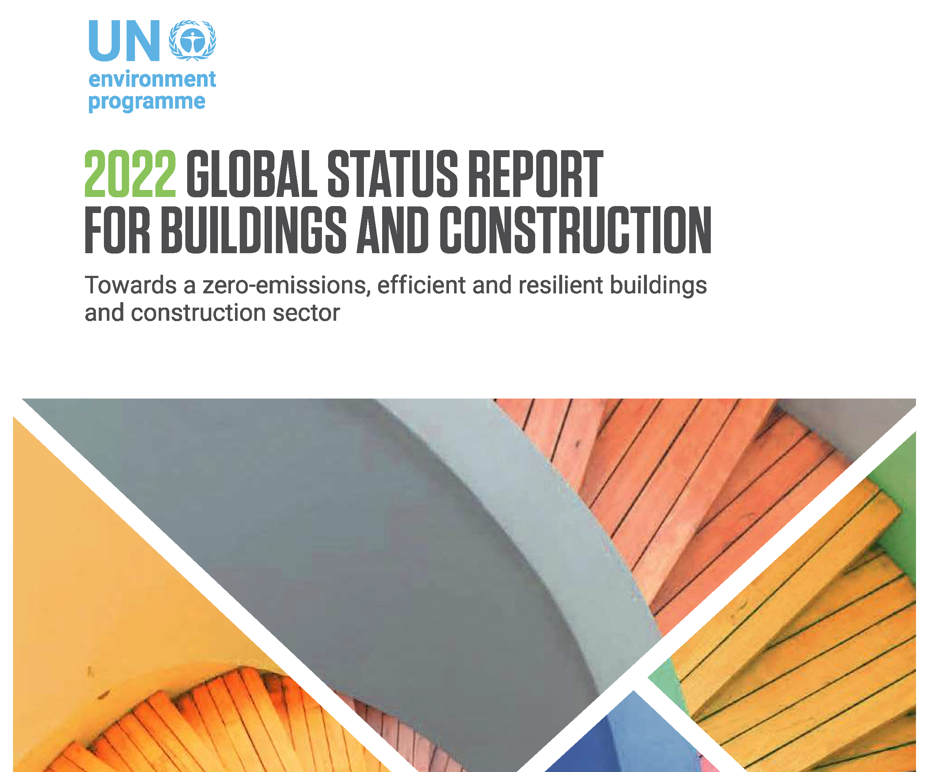
Buildings and Infrastructure
Critical Threshold
As building-sector stakeholders prepare for COP27, there is growing realization that climate action for buildings, towns, and cities must be redirected to fundamentally more holistic solutions. To decarbonize buildings and infrastructure quickly, reliably, and equitably, the enormous complexity and variability of regional and local circumstances must be acknowledged and accommodated. Ideas about building-sector challenges and solutions which shaped the Paris Agreement were heavily influenced by developed countries mostly in North America and Europe, the “Global North”. Today, evidence mounts that:
the Global North is far from meeting its commitments to decarbonize buildings, towns, and cities,
Global North must make dramatic changes to both the scope and pace of its decarbonization plans to meet its building-sector commitments, and
replicating Global North principles and practices in the Global South will exacerbate building-sector causes of climate change, not eliminate them.
Regional and Local Solutions
No matter their size and character, all buildings, towns, and cities occupy fixed and unique locations within both ecological and cultural communities. First and foremost, building-sector climate solutions must be informed by and appropriate to their contexts. The drive for global solutions must be tempered by the particulars of place and culture.
Accounting for regional and local variation does not inhibit climate mitigation and adaptation strategies but rather provides opportunities for improving and accelerating them. Buildings, towns, and cities existed for thousands of years before fossil fuels were insinuated into every aspect of how they are designed, constructed, and operated. There are many important and scalable lessons to be learned from Indigenous Peoples and heritage building traditions, lessons with particular relevance next generation building-sector decarbonization plans are formulated.
Today, more than one third of the world’s population is housed in adobe and cobb structures, mostly in the Global South. Clay-based construction systems have stood the test of time and are inherently low-carbon. Further, they are locally sourced and employ local skilled craft workers, relying on and strengthening the social and economic fabric of local communities. Displacing these proven Indigenous and heritage building traditions with mis-applied industrial technologies does harm to both climate and culture.
The building and infrastructure sector is both a massive global industry and a consumer economy. Effectively employing regulations and incentives presents great challenges. Carbon cap-and-trade may have applicability at the construction industry scale however its administrative burdens and costs make it of little value for most building owners. Achieving building-sector decarbonization also means conforming solutions to the lives and livelihoods of billions of individuals, most with dominion over a single property, their dwelling. While building-sector climate solutions must work to achieve global climate goals, they must also help satisfy the most fundamental human need: shelter. Today, neither objective is on track and their interdependence is insufficiently appreciated, both with dire human consequences.
Mitigation: Building Re-Use Avoids Carbon Pollution
The “build-to-decarbonize” predisposition which so deeply influenced the Paris Agreement framework has run its course. Reduction of “operational” greenhouse gas (GhG) emissions (Scope I & II emissions) must be accomplished without expending huge quantities of “embodied” emissions (Scope III emissions) from material production and construction. Typically, it takes decades to “recover” the carbon emitted from constructing a new building. Whole life carbon accounting studies demonstrate authoritatively that retaining and revitalizing existing and heritage buildings is the most direct way to reduce current operational emissions while minimizing embodied emissions. Building re-use is climate action – avoiding hundreds, even thousands, of tons of carbon pollution. “The greenest building is one that is already built.”
Adaptation: Arts, Culture, and Heritage and the Next Generation of Climate Action
The arts, culture, and heritage have incalculable impact on how people think and feel, and on how people behave and work together. As the next generation of climate action is formulated during and after COP27, creativity and cultural connection have a unique role to play in formulating climate adaptation solutions for the built environment and tailoring them to regional and local circumstances, particularly in the Global South. Exciting possibilities await.
Conclusion
Today, more households have cell phone service than electrical service, a seemingly impossible scenario facilitated by technology “leapfrogging.” The highly connected urban infrastructure of the Global North is under great stress, as the invasion of Ukraine and incessant disruptions from wildfires and extreme storms have illuminated in the starkest terms. Increasingly, the advantages of distributed infrastructure solutions are being acknowledged.
The celebration of Indigenous traditions is shaping the future of buildings and cities. Notably, the 2022 Pritzker Prize, the “Nobel Prize” in architecture, was awarded to Diébédo Francis Kéré, from Burkina Faso. Kéré utilizes local adobe construction and regional climate adaptation strategies to create a new generation of social infrastructure of, by, and for their communities. The broken promises of universal modernism are being fulfilled by a new generation of artists and entrepreneurs rooted in community and culture.
Climate Heritage Policy Priorities: In the context of the first COP hosted in Africa since 2016 and signaling the importance of the Global South moving forward, arts, culture, and heritage stakeholders must use their influence to raise new voices in climate discourse. COP27 must be the beginning, not the end, of the sweeping redirection so urgently needed. Opportunities to participate in international building-sector climate action planning, including the Global Alliance for Buildings and Construction (GlobalABC), the Built Environment track of the Marrakech Partnership for Global Climate Action (MGPCA) Human Settlements Pathway, and the COP27 Presidency SURGe Initiative must be leveraged to provide cogent critiques of the Global North’s track record since Paris and to redirect climate action proposals for the Global South which respect its unique ecological and cultural communities. The Climate Heritage Network’s capacity to amplify the perspectives of the arts and cultural actors from diverse Indigenous Peoples and heritage traditions is crucial as humankind crosses this threshold into the next phase of climate mitigation and adaptation.
-
Develop and promote tools to help advocates more effectively use culture, from art to heritage, to empower people to imagine and realise low carbon, just, climate resilient futures, including promoting buildings reuse as climate action through the CARE Tool.
-
Develop, promote, and popularize the practice of Building Recycling and Retrofit as a critical means to achieve required carbon reduction, and work to embed the CARE tool in practice.
-
Participate in work of Global Alliance for Building and Construction (GlobalABC) and engage with Architecture2030, working together on shifting from a build-first mindset and aligning policy and economics to support decarbonization.
Engaging with global building organizations to shift from a build-first mindset and understand true sustainability in the built environment.
Buildings and Infrastructure Leadership
-

Carl Elefante
Washington, DC, USA
-

Adala Leeson
London, England
-

Morwenna Slade
London, England
-

Lori Ferriss
Boston, Massachusetts, USA
-

Dr. Hannah Fluck
London, England
-

Mark Huck
Sacramento, California, USA
-

Stephanie Phillips
San Antonio, Texas, USA
Latest Updates
Working Group Members: In Their Own Words
“Traditional and heritage buildings play a very big role in reducing our carbon emissions by adaptive reuse, good maintenance, and a considerate energy retrofit. These interventions contribute to the aim of heading towards carbon neutrality.”
- Peter Cox, Managing Director, Carrig Conservation (Dublin, Ireland)












